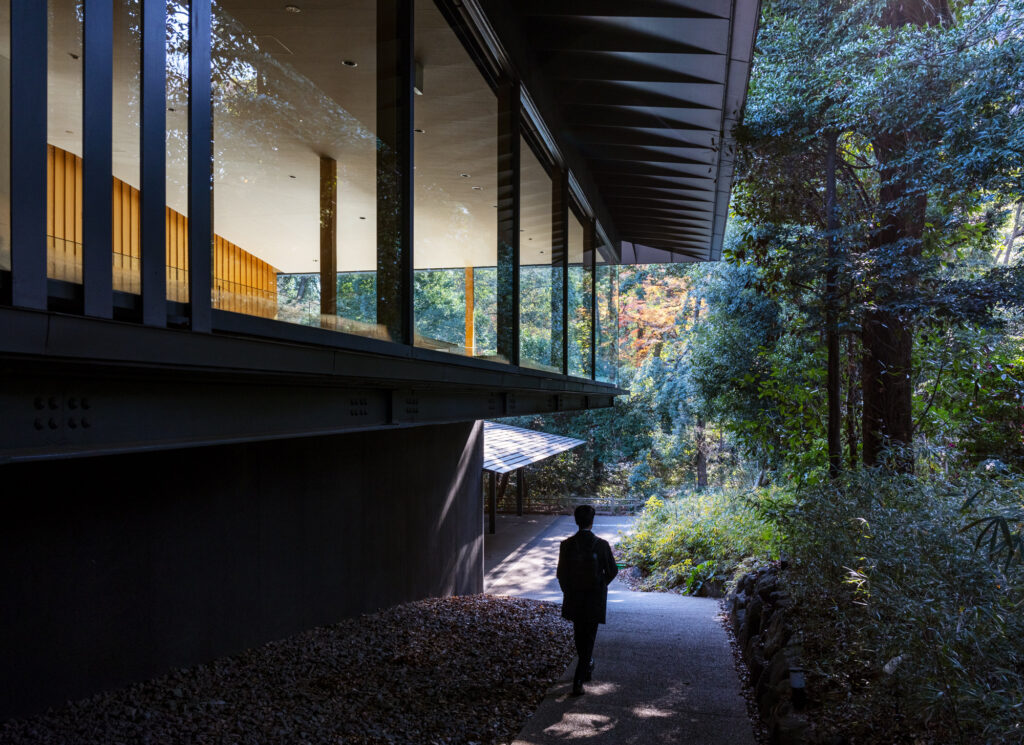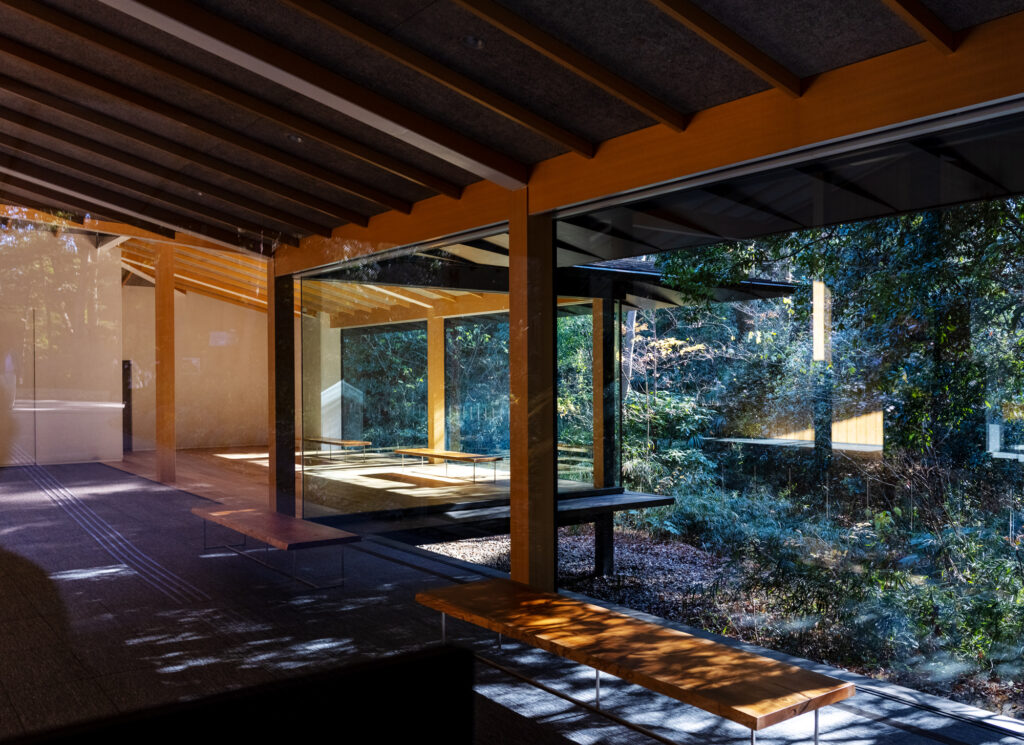Meiji Jingu Museum, Tokyo / Kengo Kuma & Associates Architects
December 20, 2024
Blending into the forest on the approach to the main shrine at Meiji Jingu, trees and wood carry many meanings in this project. Following the death of Emperor Meiji, trees were collected from all over Japan and planted in the park by volunteer workers. They have now matured and provide a great canopy over Kuma’s building. He limited the height of the eaves, divided the roof into smaller parts with tapered edges, and segmented the outer wall. Since Meiji Jingu is a Shinto shrine, and according to the Shinto religion kami (spirits) can inhabit all parts of nature including trees, the architects paid special attention to this “holiness.” The few trees that were cut down to make room for the new museum, including zelkova and camphor, have been reused for the furniture and interior surfaces. The architects did this “in order to emphasize the importance of recycling the valuable resources of the forest” and to keep the forest spirits unharmed.

